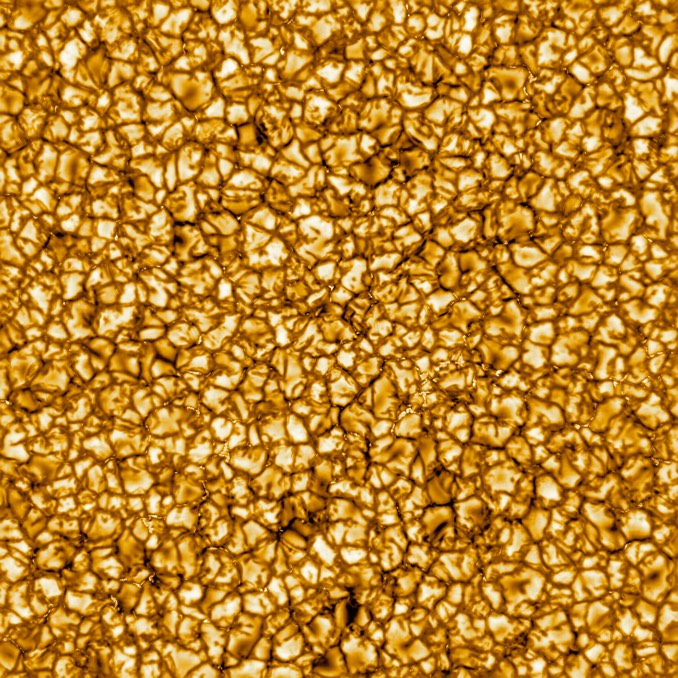
First light images from the 4-metre Daniel K. Inouye Solar Telescope atop Mount Haleakala in Hawai’i, the most powerful in the world, provide a mesmerising glimpse of our star’s churning surface, capturing details as small as 30 kilometres (18 miles) across in boiling cell-like structures about the size of Texas.
In a process known as convection, hot plasma boils to the surface in the bright centres of the cells, cools and then sinks back down in dark lanes. In those lanes, astronomers can discern small, bright markers of magnetic fields thought to channel energy up into the Sun’s super-heated corona.
The first light images from the powerful new solar telescope are the most detailed ever captured from the ground, hinting at discoveries to come (see videos below; credits: NSO/NSF/AURA).
“It is literally the greatest leap in humanity’s ability to study the Sun from the ground since Galileo’s time. It’s a big deal,” said Jeff Kuhn of the University of Hawaiʻi at Mānoa’s Institute for Astronomy (IfA).
Two powerful instruments will be installed in the next few months. The 2-ton Cryogenic Near-Infrared Spectropolarimeter will measure the Sun’s magnetic field beyond the star’s visible disc while he Diffraction-Limited Near-IR Spectropolarimeter will focus on how the magnetic field changes in extreme detail.
“These instruments use sensitive infrared technology and complex optics that reveal sunspots and small magnetic features, and how their magnetism reaches into space,” Kuhn said. “With these new tools we expect to learn how the Sun interacts with the Earth.”
While continuing to test and check out the new telescope, engineers will rely on a specialised cooling system and more than 11 kilometres (7 miles) of piping to keep the equipment from over heating.
“The focus of the telescope mirror is hot enough to melt metal within a short time,” said Inouye Solar Telescope Director Thomas Rimmele. “To deal with these heat problems we make the equivalent of a swimming pool full of ice every night to provide cooling for the optics and structure during the day.”



